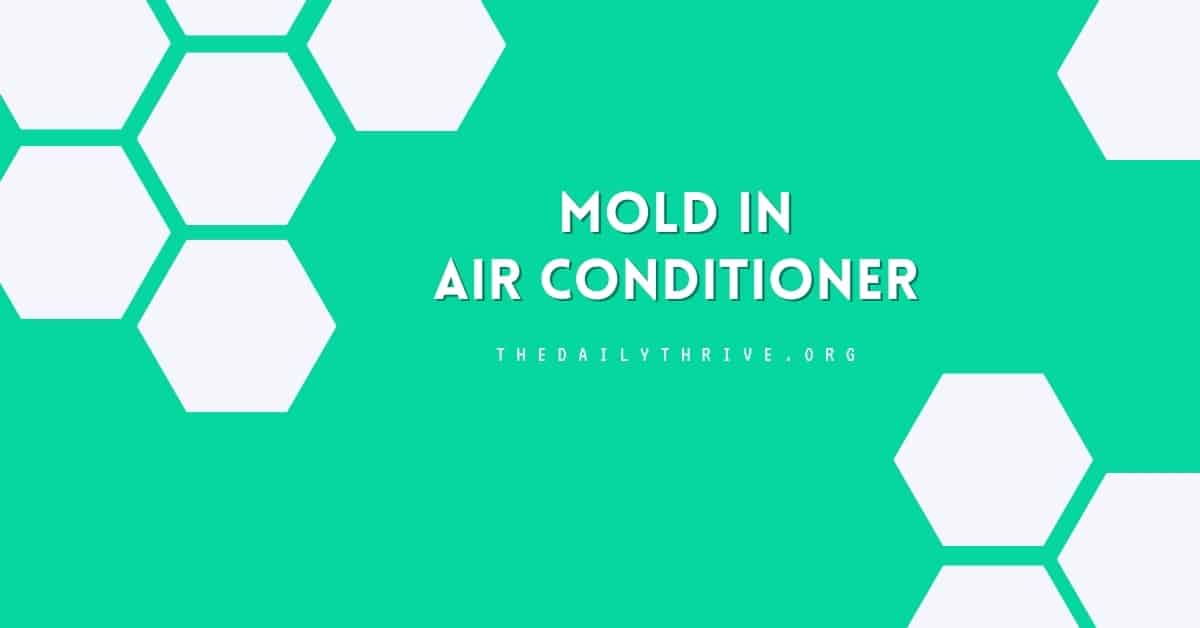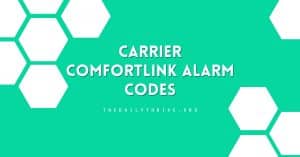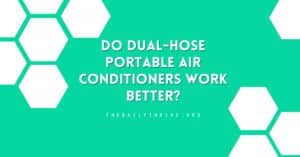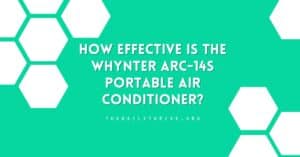Knowing how to spot mold in the air conditioning system is important for every homeowner. When you notice a moldy smell near the air vents in the indoor environment, you probably have an air conditioner mold problem. Air conditioning mold is preventable because it is usually caused by poor overall maintenance.
In order for mold to grow in the air conditioner, it needs a food source. If the ductwork and vents are not clean and there is a lot of dust and other debris, this will provide the food source mold needs to grow.
Once mold spores enter the air conditioning system, alternating high and low humidity conditions will help grow, spread, and distribute the spores throughout the house.
Once mold gets in the ductwork and the air conditioning, it will spread spores throughout the home, which could lead to illnesses associated with mold.
Mold In Air Conditioner Health Risks
Over-exposure to air conditioning can actually make you sick because centrally air-conditioned air is very dry. Mold in air conditioner causing mucus membranes to dry out, which in turn can cause colds, upper respiratory infections, dry skin, nose bleeds, and other flu-like symptoms, like fatigue, headaches, dizziness, and breathing difficulties.
Further, spending long hours in an air-conditioned building may also result in heat intolerance when you go outside, leading to exhaustion, dizziness, headaches, and may even cause heat stroke. To avoid over-exposure, make sure you don’t run the AC unit continuously and regulate the indoor temperatures using a thermostat that turns the AC unit on and off as the temperature rises and falls.
The reason that mold is a concern and you don’t want mold to get into your ducts through your AC unit is your HVAC system is the lungs of your home, circulating air. When mold contaminates your AC unit, it will also contaminate the HVAC system meaning the air you are breathing will become contaminated as well.
Health signs that you could potentially have mold in your AC unit include the following:
- Frequent colds
- Stomach pains
- Ear infections
- Frequent headaches
- Allergic reactions
- Asthma
- Coughing
- Sneezing
- Wheezing
- Itchy skin
- Sore nasal passages
- Irritated throat
- Watery eyes/dry eyes
- Hypersensitivity
- Skin care problems
You will notice that some of the symptoms above are associated with over-exposure to air conditioning as well, so it can be difficult to determine if you actually have mold in your AC.
How You Know That You Have Air Conditioning Mold
Mold is everywhere, and spores are constantly entering our homes through outdoor air, your clothes, open windows, etc. The problem with mold indoors is that at higher spore concentrations, this will cause sickness. Furthermore, mold produces toxic compounds called mycotoxins, which can cause serious illnesses, including pneumonia and bleeding of the lungs. Since mold is hard to detect and see, it is not a surprise that most people are unaware that they even have a mold in air conditioner problem.
If you are experiencing the health symptoms above, here are some actions you can take:
- Look at the vents around your home and see if there is any visible mold or a musty smell in the room.
- If you do not find any visible mold, then try this. Leave your home for a short period of vacation and pay attention to how you feel. If you had some of the illness symptoms above and all of a sudden you feel much better, then this could also indicate that the air in your home may be making you sick.
- Finally, hire a professional mold inspector to do a complete survey of the home.
If the inspector does not find any suspect mold or major moisture concerns that could be causing mold and you are still feeling sick, then you may want to invest in a comparative air quality test that measures the spore count inside of the home and outside of the home. If the test shows that the concentration of spores in the home is much higher than outside of the home, then you will know that you have a mold concern.
At this point, you should get your air conditioning units and ducts checked for mold by a professional.
Removing Air Conditioning Mold
If mold spores are found, then hire a professional to clean the AC unit. Here are some key things to keep in mind when you hire a company to service your AC:
- Did they clean the blower unit?
- Is the chemical cleaner they use certified and nontoxic?
- Does the chemical have anti-fungi and anti-bacterial properties?
- Make sure the serviceman doesn’t just clean the unit with a vacuum and brush. This will only agitate the bacteria and viruses breeding there, ensuring you and your family get sick.
In addition, a good professional cleaning of your ducts in accordance with NADCA standards may also be required if mold is discovered inside the ducts during the cleaning.
You want to hire a professional to address your air conditioning mold problems because it can be difficult to access all the parts of the air conditioning ductwork; professionals have experience and training to do this properly. In addition, professionals have the equipment required to do the job properly, including air whips or air skippers that drive dust, dirt, mold, and other debris toward collection devices fitted with HEPA (high-efficiency particulate air) filters.
Preventing Mold in Air Conditioner
As mentioned earlier, the problem of mold in an air conditioner can be prevented. Follow these guidelines to prevent the development of mold in the first place.
- Ask your AC company to install a humidistat and set it to around 50% to 60% relative humidity (RH) so that you always maintain indoor humidity between 30% and 60% RH.
- Clean and/or replace your unit’s air filters according to the manufacturer’s recommendation. Air conditioner filters are designed to prevent the spread of bacteria and viruses and require proper cleaning or replacing because as pollutants build up and get caught in the filter, these same pollutants will disperse from the filter and into the air.
- Have a yearly maintenance check performed by an HVAC service technician.
- Make sure your home has adequate ventilation to help bring fresh air inside and reduce indoor contaminants. Turning off the system and opening the windows occasionally can help circulate the air for periods of time.
- Have an air cleaner professionally installed on your central heating and air conditioning unit.
Running your air conditioner is essential to keeping humidity levels down, which is a common cause of mold. Unfortunately, if you are not properly maintaining your AC unit, it could become a potential source of mold contamination in your home. The lesson, therefore, is preventative maintenance to ensure that your AC is running efficiently and doing its job, i.e., to cool air to make you more comfortable and at the same time keep humidity at a level that does not allow mold in air conditioner.






